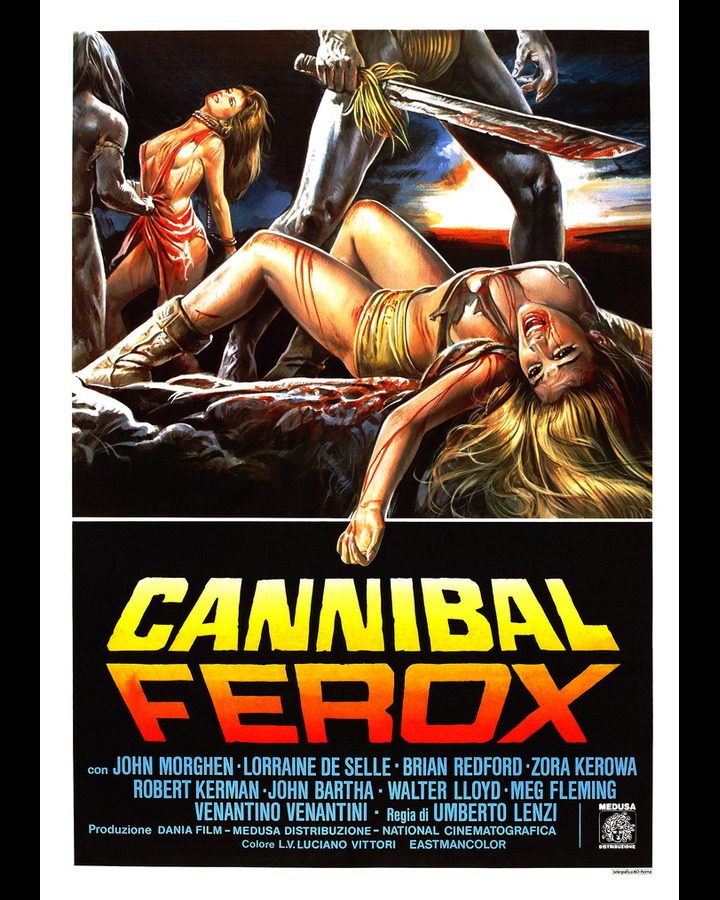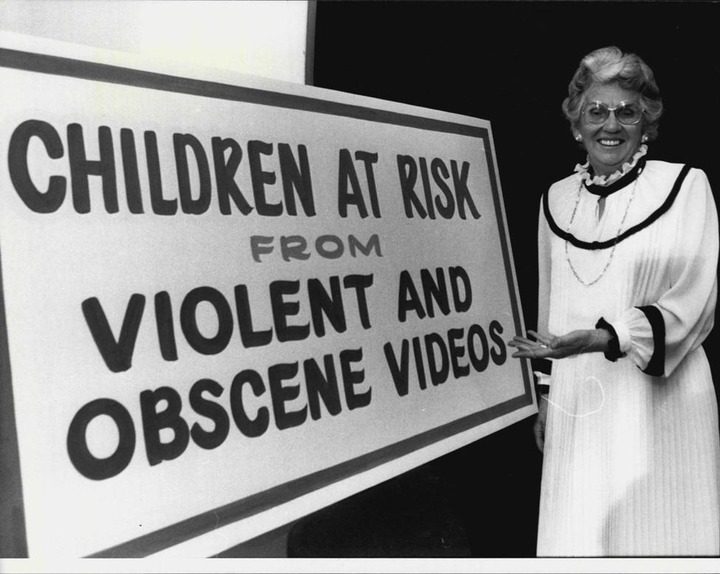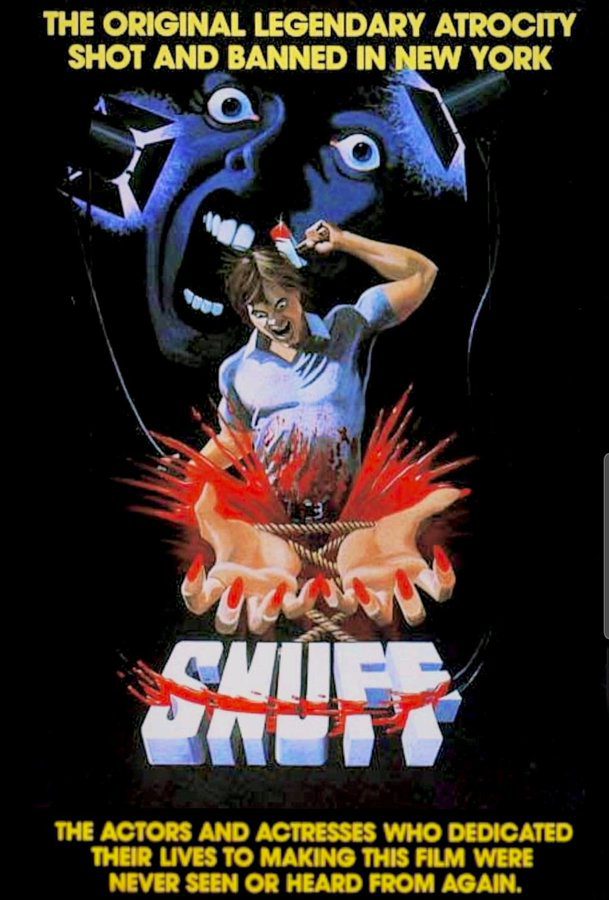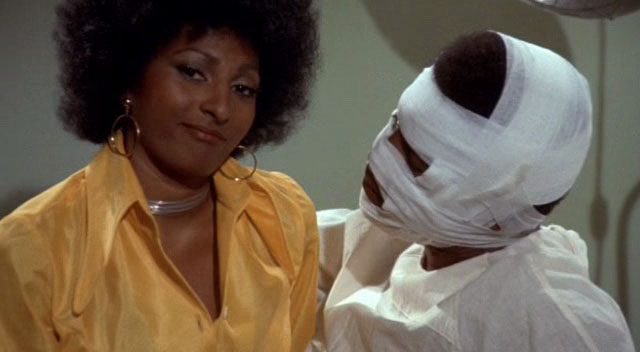Media literacy is important, for no other reason than it equips one to be able to tell the difference between fascist propaganda and Sydney Sweeney joking about her boobs for the umpteenth time. The one thing fascism loves more than moral panics is ignorance and fanaticism, which are forever busy and need feeding. Moral panics have been, will be, and are the easiest and simplest way for those in power to manipulate the masses, to consolidate the only thing that matters to them: power.
Moral panics are usually silly and often moronic, but can have dire consequences. Heck, look at the meltdown the Right had over Dylan Mulvaney and her partnership with Bud Light. A meltdown that was mildly hilarious until you saw the violent rage coming to the surface and understood it wasn’t about beer or even Dylan; it was about trans people existing.
Swerfs and Terfs have joined forces and the mask of modern feminism has slipped off, only to reveal it was second-wave feminism all along. Queer rights, women’s rights, civil rights, and basic rights are under siege. But the citizenry isn’t falling in line, and so the fascists in power have turned to their oldest and most reliable tool: censorship.
Censorship is their greatest weapon, along with the potent and insincere rally cry of “What about the children?” Let’s be clear, these people have never once cared about the children in any capacity other than how they can best be controlled and indoctrinated.
You may be wondering where all of this is leading too? Why is Old Man Sherman once again shaking his fist at the clouds and mumbling bizarre folksy curses? Or better yet, where the hell has he been and why is he just now poking his head out like some kind of hick groundhog? Besides, what does any of this have to do with movies, even tangentially?
I’m here because it’s October and as any long-standing reader of The Fandomentals will tell you, I dedicate the month of October to horror movies. So for 2025, in the wake of Colbert and Kimmel literally being cancelled, of online rage being so omnidirectional that I’m reminded of the scene in James Gunn’s Superman with the angry monkey-bots farming outrage, of people sacrificing critical thinking to the altar of viral moral superiority, and so, for this October I’ll be looking at: Video Nasties.

Yes, Video Nasties, a cadre of films so reviled by the pearl clutchers that they tried to censor, ban, and even prosecute the people who made them, distributed them, or showed them. We are, as a country, in the twin grips of a fascist descent and a moral panic. The idiocy and puritanical anti-sex and cruelty of it all can make one downright depressed. But, weird as it may seem, I find it helpful that none of this is new, nor are we the only ones to suffer through it.
Still, the horror of the now is becoming all consuming and will find ways to exhaust you and diminish you. More and more, I find myself thinking about the old Groucho Marx’s joke, “Who are you going to believe? Me or your own eyes?” But what happens when those eyes become gullible, ill-informed, and plain incurious about the reality in which they are witnessing?
Hence, the Nasties.
It’s important to understand that when home video first exploded into existence in the 70s, there was no rating system in the UK for video releases. The BBFC (British Board of Film Censorship) had been around since the 20s, but it dealt strictly with theatrical releases. There was no rating for films that skipped theaters because they couldn’t find theatrical distribution. The desire for some kind of ratings to help guide consumers, in a time pre-internet, where finding out about movies required effort, was genuine.
Heck, here in America, we had Hays Code as practiced by the MPA (Motion Picture Association), which also had zero authority over VHS releases. Though they decided to go straight to the source and tried to make VCRs illegal. The reasoning being that they were afraid VHS would corrode the financials of the studios. Guess they thought the kids would be alright.
So the UK was hardly alone in struggling with the home video revolution, whether it was VHS or Betamax. Part of the problem was that video stores weren’t like theaters; they held hundreds of movies, available at any time, for you to rent to watch at any time, at your leisure.
Before VHSs you only saw a film in the theater and only saw it again if you were lucky to see it on TV or it was re-released. But now, you could rent it and watch it as many times and whenever you want? Sound familiar? Sounds like something many streamers have said to get you to subscribe for the low-low price of “better than cable” until it wasn’t. Everything new is old, the past rhymes with the future, and history is a nightmare which we are all trying to awaken from.
Yes, the UK had The Obscene Publications Act of 1959. But its wording was vague at best. Obscenity is defined as something that would “tend to deprave and corrupt persons who are likely, having regard to all relevant circumstances, to read, see or hear the matter contained or embodied in it.”
Enter forces like Mary Whitehouse, the head and co-founder of the conservative group “National Viewers’ and Listeners’ Association”, ironically named because neither Whitehouse nor her fellow members had a particularly good sense of reading or listening skills. Whitehouse famously said that she never watched the movies or shows she found offensive and that she didn’t have to know something was obscene.
Whitehouse was a woman so reviled and so joyless that the fact she’s not more well known outside of the UK is simply because she was only barely beaten in both categories by Margaret Thatcher, but only just. But what Whitehouse and the DPP did was do what fascists always do: take political and social unrest and blame it on someone else. For them, it was unrated movies with titillating box art. Like the covers of old-school fantasy novels, the VHS box art was writing checks their low-rent ass couldn’t hope to cash. But that’s all part of the charm when it comes to movies: the promise of the time will have, the selling of the experience that led one to believe that the movie was more vile than it actually was.

Today, they would likely blame trans people. Oh, look at that! Like clockwork, the unoriginal bastards.
“What is interesting to me is how little historical memory we have. The next time there’s a panic we won’t remember just how stupid the last one was and how people get away with things.” – Martin Barker, Cultural Scholar
In 1984 Parliament passed The Video Recording Act, an act that put VHS under a more draconian set of rules than theatrical release. The Video Nasties were an ever evolving list of movies drawn up by the DPP (Director of Public Prosecutions) that were deemed to violate the newly amended Obscenity Act to help combat erotic films of the late 70s. These films were deemed too violent, too distasteful, too vulgar, for the general public.
Video stores, at this time, weren’t chain stores like Blockbuster; they were instead Mom and Pop stores, often backrooms of a local shop. Independent stores that all of a sudden found themselves being raided by cops and threatened with prosecution. Bureaucracy often has an absurd sense of humor, as cops HAD to watch the films to make the obscenity charge stick. Which led to more than a few beat cops “accidentally” renting The Best Little Whorehouse in Texas, only to be confused by all the music and disappointed by the lack of obscenity. I wonder if any of them watched the movie and realized they were the baddies?
The movies on the Video Nasties range from the obscure fare like The Toolbox Killer and The Beast in Heat to the classics like The Evil Dead and The Texas Chainsaw Massacre. The Texas Chainsaw Massacre is a perfect example of how unwieldy and unserious the Video Nasties movement was. The legendary, low-budget film about a family of cannibal-maniacs shows very little gore; at the very least, an amount of gore no one would call “obscene”. But the psychological violence was the shocking thing that unnerved people. The implied gore was too revolting for the masses.
To say nothing of that title! The Texas Chainsaw Massacre is a banger title in any era. Much like the artwork, the title conjured up more graphic and disturbing imagery than the film actually showed. But that was the point. Most of the stuff in the Video Nasties was laughably cheap and, despite the horrors depicted, almost laughably inoffensive.
Except for the nazi-sploitation stuff. I don’t truck with that and never have. I don’t know why but you can show me dismemberments, sexual violence, and I’m good. But while I may laugh at titles like Ilsa the She-Wolf of the SS or Love Camp 7, I also have zero desire to see it.

But most of the people really offended were people who were never going to see the movie anyway. Or more to the point, people who didn’t realize how movies were made. This is a vital point because if you think movies are documentaries, you begin to misunderstand the very basic principle that none of this is real. If you think it is a silly and basic concept to understand, look at how fandoms have demanded “realism” in fantasy comic-book films and have thrown up their hands when movies based on true stories have, heavens to Murgatroyd, lied!
The downside of accessibility is that while you get more eyes on the art, you also get more morons and jerkweeds who bristle at being able to do things like think for two seconds about what’s being shown to them. Or worse, people so disenfranchised that they feel safer going after people in public with perceived power rather than the people in actual power.
It’s how you get instances like Ruggero Deodato, the Italian director of the infamous nasty epic Cannibal Holocaust, being charged with murder because people believed he had actually killed his stars. The actors had to physically show up in court to prove that it was all a movie. The irony is that Deodato is indirectly responsible for the Video Nasties as he and the producers of the film wrote fake letters pretending to be outraged parents and sent them to conservative groups as well as a copy of the movie to Whitehouse in hopes of generating buzz. I’m all for people finding out but in this case, I think he can be forgiven for not realizing exactly how much of a loon Whitehouse was.
What’s mildly interesting, but more disappointing, is in our own era, with the advent of streaming, we’ve seen a dilution of personality and spectacle as opposed to an influx. We’ve opted for self-censorship to the point that we call it “content”. In the modern era, more eyes have equated to self censorship in the extreme. Anytime anyone actually has sex in a movie or looks like they have sex, it’s treated like some sort of cultural defining moment.
Yet, violence has become so commonplace that the shooting of a low-level podcaster was blithely shared online with little to no thought to “the children” whatsoever. Strangely enough, the Saw franchise, The Human Centipede, or even The Terrifier series are all more violent and disturbing than anything on the video nasty list. But those movies are in no danger of being banned, yet sex has all but vanished from the mainstream.
Isn’t that strange? We have progressed so far, and yet, we have moved so little. Social media only amplifies the cry of the artistic illiterate, as the chant “art must be moral” echoes across the digital landscape.
Art is under no obligation to be moral or inoffensive.
The morality comes not from the art itself but from how the art is produced, not what the art is expressing. For art is nothing but expression, and if art is subjective, then surely we must have a healthy and robust arena for that expression to exist. Not to beat a dead horse, but none of this is real. Which is why the production and creation of said art must be moral-because that is real.
But people went to jail over these cheap little sleazy films. These films were pulled from shelves and thrown into incinerators. If burning books boils your blood, then surely burning films must register a spike in blood pressure. You have to understand, this was a stupid and silly overreaction, but the overreaction was scary and vile. Much like with all moral panics we see today-what makes it worse is how little we seem to have learned.
We have grown so desensitized to violence now that many of the video nasties seem quaint, or hardly that offensive. The film Mausoleum is a prime example. A movie so goofy and cheekily unhinged that anyone finds anything remotely offensive within the film, including the demoness with tiny heads for boobs, is more telling about what these people were really outraged by, than of any underlying nuanced debate about the effect of art on a populace, young and old.
The difference between then and now is that the Video Nasties were made on the cheap. The lighting was bad, the dialogue stilted, and the actors were more often than not friends of the filmmakers looking to help out. The cheapness added to the thrill and the aura of taboo. VHS degraded rapidly, so popular videos showed wear and tear, often making things more disgusting and horrifying than they were because you could barely see what was going on.
Today, even cheap films look better. A Serbian Film, a movie some would call a spiritual successor of a Video Nasty, looks so good, and anyone with half a brain knows it’s fake. But the thing is, moral outrage or not, it looks shiny and pristine. Professionally and competently made but devoid of any spunk. Still, the thread is there, the delight of being shocked for shock’s sake. The desire to be shocked and revolted is a storied cinematic tradition.
Not all video nasties are badly made films, but they all share a common thread of someone wanting to make this and see it through. Contrast that to today, where I’ve seen blockbusters with million-dollar budgets that felt like no one cared about anything except when they broke for lunch. For heaven’s sake, the new Spider-Man is getting praise simply for shooting on real locations.
Still, it’s important to look at these films to better understand how badly moral panics age. How quickly the milk of fascism curdles under the bright light of clear-thinking day. I’m reminded of an old cartoon of a rich, fat man dragging a woman in a nightgown into court by her feet and proclaiming, “Your honor, this woman gave birth to a naked child.”
Fascism uses good taste, civility, and appropriate behavior as cudgels to control not just masses but groups that exist both within the mainstream and on the fringes. Uniformity and decency: behave the way they want you too, look like they want you too, think like they tell you too. Words uttered and aimed usually at PoC, Queer people, and even cis straight women who refuse to live quietly and demurely. Because fanaticism is forever busy and needs feeding.
But the secret to fascism is how often it fails. Yes, the DPP list was ever evolving, but there is also a list of “Dropped” movies. Movies where they failed to make a case, or met with acquittal, and so they were downgraded to Section 3 offenses. Section 3 being less obscene than section 2, natch.
Section 3 movies also included movies that they didn’t think they could get away with prosecuting but felt like there might be a chance. These were lesser charges under the Obscenity Act and as long as the distributor or filmmaker made the required cuts then they would be certified and allowed to be sold.
“They now laugh it off and the fact that almost all these films are available, uncut, and in the public domain-they don’t care. They move on, because what they want to do is dominate the present.” – Barker
Horror movies, more than any other genre, explore all of this, sometimes artfully, other times salaciously and in bad taste. So what of it? It’s their right to be vulgar, exploitative, and leering. Oftentimes, the movies exhibiting these qualities are merely reflections of our own societal decay. The images in them, more often than not, are reflections of attitudes and trends of that era; they are what they are, why blame them for merely holding up a revolting mirror.

The Video Nasties include horror movies from all walks of life because fascists don’t care about art; they only care about power. But the Video Nasties are an important reminder that controversial genre films often push the boundaries of our understanding of both the art of cinema and of ourselves. The creeping horror of existence can sometimes only be expressed through disturbing or horrific imagery.
Moral panics that fueled the likes of the Video Nasties are like a virus. There is no real cure, but we can try and inoculate ourselves against them. No, we never had a Video Nasties debacle in America, but we did have the Hays Code and a little thing called the Satanic Panic, and the current Trans women in sports debacle. The current culture war is proven to be the most humorless, sexless, and downright irritating rebuttal to common sense, critical thinking, and basic humanity.
So, for the month of October, and for my own sanity, we will be celebrating the Video Nasties. Each film will have a little intro letting you know if it was from the DPP list, the Dropped list, or if it was from the Section 3 list, to give you some context. We will thumb our nose at good taste, revel in obscenity and vulgarity, all the while giving the squares a righteous middle finger along with a boisterous raspberry blown in their general direction.
Oh, and I’ll leave you with this fun little nugget: in 2010, Parliament realized that the Video Recording Act was, in fact, illegal because they had failed to propose it to the European Union and made the law unenforceable in courts. Oopsie-doodles! They of course merely passed the Video Recordings Act of 2010. Yeah, that’ll do it.
Images courtesy of Gemstone Pictures, New Line Cinema, MCI, Monarch Releasing Corporation, American International Pictures, and Grindhouse Releasing
Have strong thoughts about this piece you need to share? Or maybe there’s something else on your mind you’re wanting to talk about with fellow Fandomentals? Head on over to our Community server to join in the conversation!

